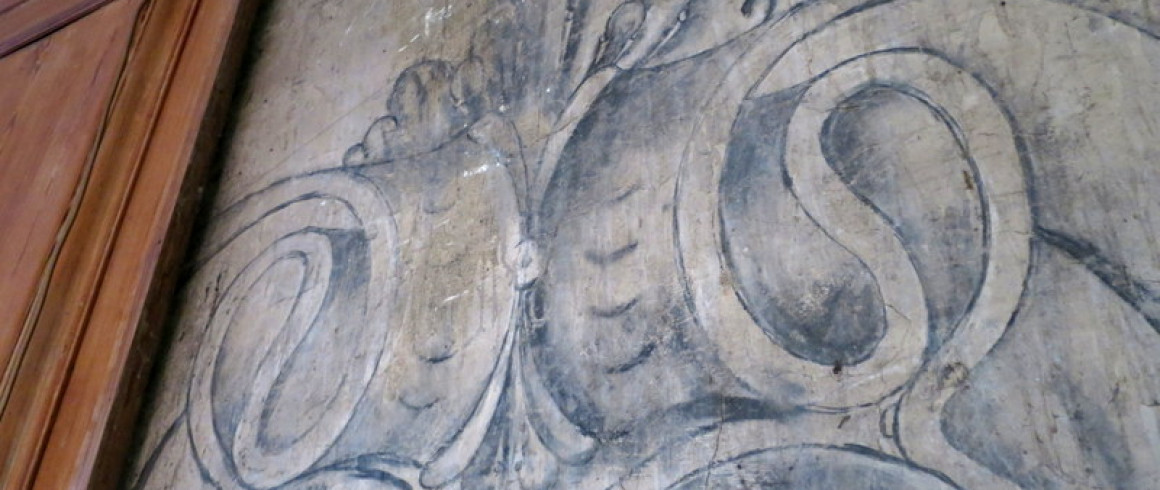Hidden art
In July 2014, two remarkable discoveries were made at Cambridge colleges.
At Newnham, librarians found a secret stash of chocolate bars in a hollowed-out book. At Trinity, builders discovered newspaper clippings and personal notes from the First World War hidden behind the plasterwork. However, neither seemed as extraordinary as a discovery made at Pembroke fifty years ago, in 1964.
The Hitcham Building was completed in the 1660s, at around the same time that the College chapel was built. The large room on the first floor was later turned into a fellow’s set to house one of the College’s most celebrated members, the poet Thomas Gray. In the 1960s it was decided that the room should be restored to its original layout and named after its famous resident. The completion of this work required the removal of some of the wall panelling.
Workmen were amazed to discover that, behind the panels, some of the plaster walls were covered with accomplished architectural drawings. The largest of these, on the east wall, showed a cartouche (an ornamental scrolling frame) with swags of fruit, flowers and bows on either side. On the south wall was a flaming urn. Both were drawn in black chalk low down on the walls, so it seemed unlikely that they were intended to be decorative.
It was then noticed that the cartouche looked just like the ornament on the west end of the College’s chapel, designed by Sir Christopher Wren. The urns too were similar in size, shape and design to those on the corners of the roof. Only then did the viewers realise that they were looking at life-size architectural cartoons, perhaps drawn by someone in Wren’s circle, and that the room was probably used as a drawing office during the construction of the chapel in the 1600s.
Although the drawings were clearly not used as templates for the final stone work, they represent an early stage in the design process, allowing the masons to work on the dimensions and details at full scale. It is assumed that the drawings were on show until the turn of the seventeenth century, when the panelling was installed, leaving them preserved but forgotten. Since they have been re-discovered, the panels are now hinged to allow visitors to take a peek at the hidden drawings.
As the College records do not contain details of the masons employed to work on the chapel, it has not so far been possible to determine who did the drawings. Other questions remain. Behind the panels, the workmen also discovered a smudgy drawing of a man in black clothes and a head-and-shoulders portrait of a bearded man in Jacobean dress. Who are these figures? Why were they drawn? For now these things remain among the College’s unsolved mysteries.

For more information, see Bill Grimstone's book Building Pembroke Chapel (pp.64–70).

